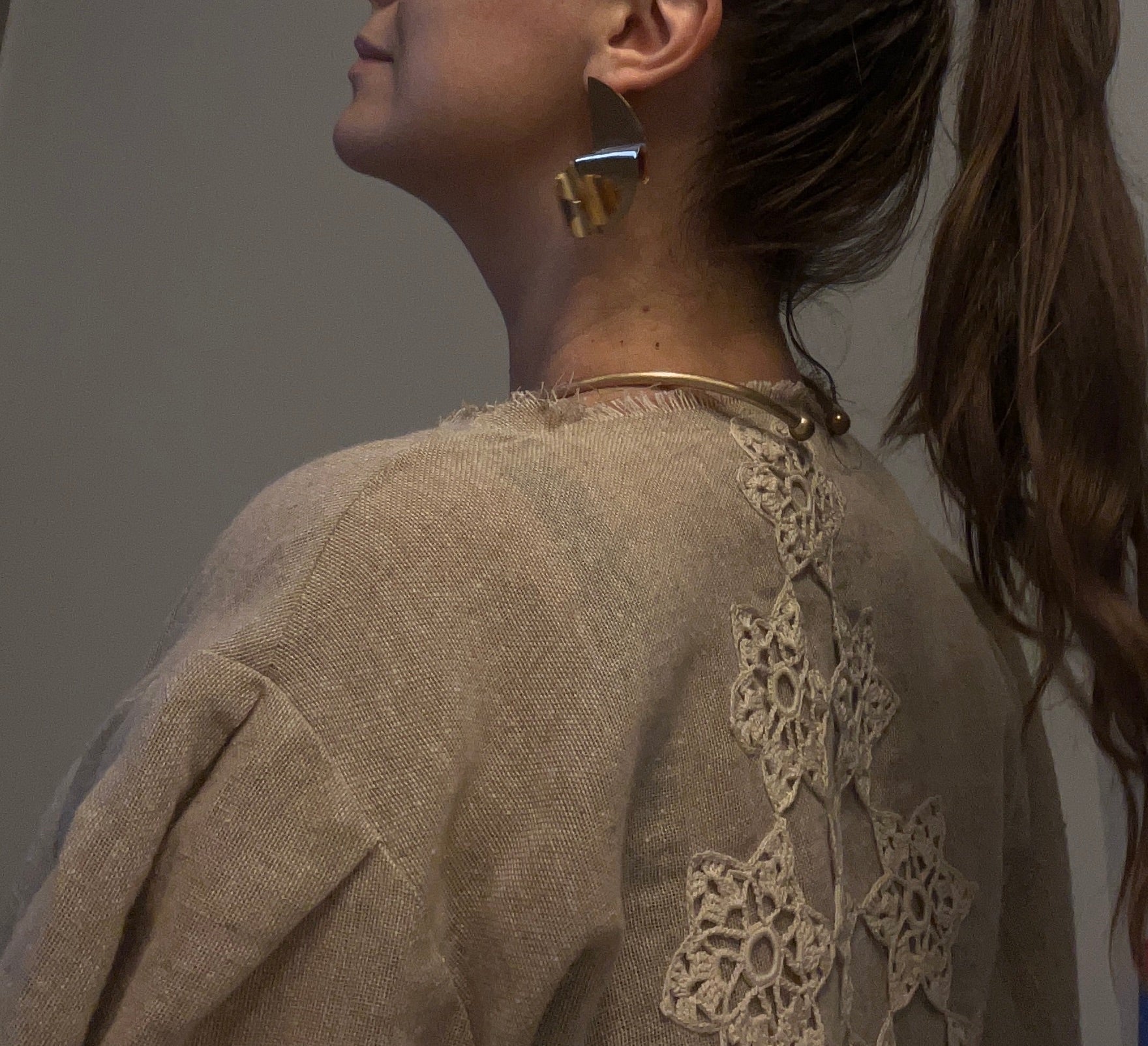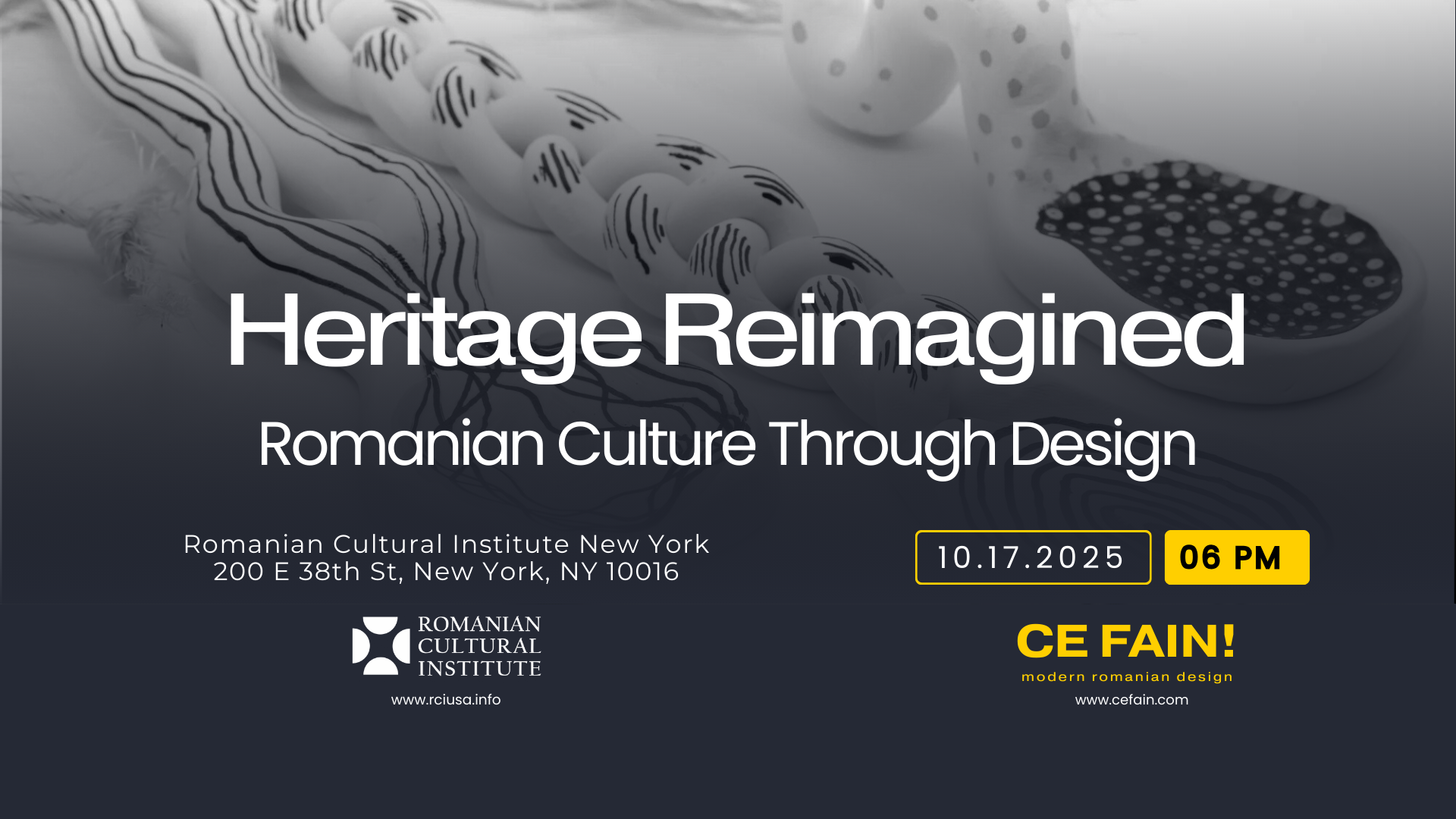
Hyperborean Folklore: A Living Dialogue Between Heritage and Modernity
In a world of fleeting trends and fast fashion, there is something profoundly moving about art that reaches beyond the surface, touching the threads of history and the soul. Hyperborean Folklore, founded by artists Iraida Florea and Vlad Dumitru, stands at this rare intersection. It is not merely a brand of jewelry and design—it is a sanctuary where the echoes of ancestral heritage are transformed into contemporary talismans, each piece alive with memory, symbolism, and spirit.
To step into the world of Hyperborean Folklore is to step into a sacred space of remembrance and creation, where ancient patterns whisper through modern artistry, and where Romanian folk traditions find a new language in today’s cultural landscape.
The Call of the Hyperborean
The very name—Hyperborean Folklore—evokes a sense of mystery. In Greek mythology, the Hyperboreans were a legendary people who lived beyond the north wind, in a land of eternal sunlight and beauty. By adopting this mythical reference, Florea and Dumitru situate their creations in a timeless realm—one that transcends geography, borders, and eras.
Their work draws deeply from the ethnic attire of Romania, especially the sacred geometry and embroidered motifs found on traditional blouses and costumes. These were never simply decorations; for centuries, they carried cosmic meaning, spiritual protection, and cultural identity. The intricate lines sewn by hand were, in essence, a language—an ancestral code of belief and belonging.
Hyperborean Folklore revives this forgotten language, ensuring that the stories of these symbols are not lost to modernity but are instead carried forward—reinterpreted in forms as diverse as jewelry, garments, performances, and visual art.

The Temple of the Goddess
Central to the brand’s philosophy is the Temple of the Goddess—a symbolic and creative space where all Hyperborean Folklore pieces are envisioned as offerings. It is both a metaphor and a living practice: each design emerges as an act of reverence, connecting creator, wearer, and heritage.
The goddess archetype is one of the oldest and most universal images of power, fertility, wisdom, and protection. In Romanian folklore, traces of this divine feminine run deep, surfacing in tales of nature deities, agricultural rituals, and the sacred role of women in preserving oral traditions and craft.
By invoking the goddess, Florea and Dumitru bridge the sacred and the everyday. A necklace becomes more than an ornament—it becomes a portable altar, a talisman reminding the wearer of their inner power, resilience, and place in the continuum of culture.
Sacred Geometry: The Language of Symbols
Every design in Hyperborean Folklore is infused with sacred geometry, the universal patterns found in both nature and traditional folk art. The diamond, the cross, the spiral, the tree of life—these are not random shapes. They are keys to ancient wisdom, recurring across civilizations as symbols of growth, balance, infinity, and connection between the earthly and the divine.
For example, the rhombus motif, embroidered for centuries on Romanian blouses (ie), represents the feminine principle, fertility, and the cycle of life. Worn close to the body, it was believed to protect women and ensure the continuity of life.
The spiral, another common motif, echoes the rhythm of existence itself—birth, death, and rebirth. By carrying these symbols into contemporary jewelry, Florea and Dumitru ensure that they remain more than museum artifacts; they become living companions, grounding individuals in tradition while inspiring them toward the future.

Jewelry as a Talisman, Not an Accessory
In much of today’s world, jewelry is seen as a luxury, a way to decorate oneself. For Hyperborean Folklore, it is something far deeper: a talisman, a bearer of memory, and a source of energy.
Each piece is handcrafted with the intention of embodying meaning. A pendant may echo the embroidery of a specific region, invoking its history and the lives of those who once wore it. A pair of earrings may carry the patterns of sacred geometry that once adorned ritual costumes, repurposed to channel strength and protection for the modern wearer.
This is what makes Hyperborean Folklore unique: the fusion of aesthetics and essence. To wear one of their creations is not just to make a style statement—it is to carry a piece of spiritual and cultural heritage, reimagined in a form that speaks across time.
Iraida Florea and Vlad Dumitru: The Artists Behind the Vision
The artistry of Hyperborean Folklore is born of collaboration between Iraida Florea and Vlad Dumitru, two visionaries who breathe life into sacred traditions. Their partnership has resulted in what can only be described as a transcendent alphabet of forms and motifs—a visual language that speaks directly to the soul.
Their custom-made jewelry, inspired by the sacred geometry stitched into traditional Romanian costumes, serves as a bridge between past and present, weaving complex narratives into every piece. Each creation embodies the wisdom of ancient goddesses, interlacing symbols that have withstood the test of time and shaped cultures across generations.
These motifs do more than catch the eye—they function as talismans of fortune and connection, infusing the wearer with a sense of heritage and spiritual grounding. Together, Florea and Dumitru craft refined works of art that resonate with art lovers around the globe, inviting them to embrace the rich tapestry of history while celebrating individuality and creativity.
In a world dominated by mass-produced accessories, the handcrafted jewelry of Hyperborean Folklore is a refreshing reminder of mastery, heritage, and personal expression. Each piece, meticulously designed, invites not just adornment but embodiment of the ancient energies and stories they represent.

Performance as Living Folklore
Hyperborean Folklore is not confined to objects. The artistic vision of Florea and Dumitru often extends into performance, embodying the goddess archetype through ritualistic movement, costume, and storytelling. These performances are immersive experiences—audiences are not merely spectators but participants in a symbolic journey.
Through such live art, they reclaim the performative aspect of folklore, which in Romanian villages often included dance, song, and ritual as communal acts of renewal and protection. Hyperborean Folklore reimagines this for a contemporary stage, bringing people face-to-face with their cultural memory and spiritual heritage.
Between Past and Present
Why does this matter? Why should a modern person, living in a fast-paced urban environment, care about sacred motifs and ancient folklore?
Because in a fragmented world, symbols offer connection. They remind us that we are part of a lineage that stretches back thousands of years. They reconnect us to nature, to cycles of life, to community, and to spirituality.
Wearing a piece from Hyperborean Folklore is an act of resistance against cultural amnesia. It is a conscious choice to carry forward wisdom, to honor one’s roots, and to remind oneself that beauty can also be deeply meaningful.
A Universal Message Through a Romanian Lens
Though deeply rooted in Romanian tradition, Hyperborean Folklore carries a universal message. The sacred geometry found in Romanian embroidery also appears in Greek, Celtic, Middle Eastern, and Indigenous cultures. The goddess archetype is present in myths from every continent.
Thus, the work of Florea and Dumitru speaks not only to Romanians but to anyone seeking meaningful art that bridges cultures and epochs. It is an invitation for people across the world to recognize the common threads that bind humanity, while also celebrating the uniqueness of Romanian heritage.

Craftsmanship as Ritual
In Hyperborean Folklore, the act of creation is itself a form of ritual. Each piece is hand-shaped, each line and pattern considered with intention. The process mirrors the way women in villages once embroidered for months, infusing their labor with love, care, and belief.
This emphasis on craftsmanship is also a counterpoint to mass production. By choosing Hyperborean Folklore, one supports slow design, authenticity, and respect for tradition—values increasingly rare yet deeply necessary in today’s world.
The Future of Hyperborean Folklore
As Hyperborean Folklore grows, its vision extends beyond jewelry and performance. It aspires to be a cultural movement, one that inspires people to rediscover heritage, engage with symbolism, and live with greater awareness of the sacred in daily life.
Exhibitions, collaborations, and international showcases have already begun positioning Hyperborean Folklore as an ambassador of Romanian design and spirituality. Each new piece, each performance, each project adds another chapter to this living dialogue between past and present.
Conclusion: Wearing the Future, Rooted in the Past
Hyperborean Folklore is more than design—it is an experience, a philosophy, and a bridge. It invites us to see jewelry not as mere accessory but as sacred language, to view heritage not as relic but as inspiration, and to embrace art as a living, breathing force that shapes identity.
In the words of its creations, one can hear the whispers of ancestors and the call of the future. Each talisman, each symbol, each performance reminds us that heritage is not static—it evolves, as we do, carrying forward the wisdom of the ages into new forms of beauty.
To wear Hyperborean Folklore is to carry the goddess within, to connect with the sacred patterns of existence, and to celebrate the timeless dialogue between tradition and innovation.


